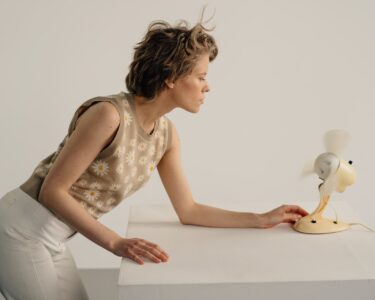The fashion industry is witnessing a transformative era in custom tailoring, thanks to the rapid advancement of technology. The evolution of body measuring techniques from traditional tape measures to sophisticated digital solutions signifies a monumental shift in how bespoke clothing is crafted. This technological revolution is not only enhancing the precision of measurements but also making custom fashion more accessible and sustainable. Let’s delve into how these innovations are shaping the future of made-to-measure fashion.
Historically, tailors relied on manual tape measures to capture the dimensions of their clients, a method requiring skill and experience to ensure accuracy. While effective, this process was time-consuming and prone to human error. The advent of 3D body scanners and augmented reality (AR) applications has dramatically changed this landscape. These technologies offer a level of precision previously unattainable, capturing every contour of the body in seconds and translating them into exact measurements. This leap in accuracy not only improves the fit of custom garments but also enhances the overall customer experience by streamlining the measuring process.
 One of the most significant barriers to accessing made-to-measure fashion has been the necessity for in-person fittings. Technology is dismantling these barriers through virtual fitting solutions, allowing customers to obtain accurate measurements from the comfort of their homes. Apps and online platforms leverage the power of smartphones and AR to guide users through the self-measuring process, making bespoke fashion more accessible to a broader audience. This convenience is democratizing custom tailoring, once considered a luxury, and integrating it into mainstream fashion.
One of the most significant barriers to accessing made-to-measure fashion has been the necessity for in-person fittings. Technology is dismantling these barriers through virtual fitting solutions, allowing customers to obtain accurate measurements from the comfort of their homes. Apps and online platforms leverage the power of smartphones and AR to guide users through the self-measuring process, making bespoke fashion more accessible to a broader audience. This convenience is democratizing custom tailoring, once considered a luxury, and integrating it into mainstream fashion.
The precision offered by digital measuring tools has a profound impact on sustainability within the fashion industry. By ensuring a perfect fit on the first attempt, these technologies significantly reduce the need for alterations and returns, thereby minimizing fabric waste. Additionally, the data collected can optimize inventory management and production processes, ensuring that resources are used more efficiently. This shift not only supports the environmental aspect of sustainability but also promotes economic sustainability by reducing costs associated with waste and inefficiency.
Technological advancements in body measuring are enabling brands to offer personalized fashion at scale. With digital measurements, tailors and designers can cater to individual preferences and body types without the traditional limitations of bespoke tailoring. This personalization extends beyond fit to include customizable design options, further blurring the lines between mass production and bespoke craftsmanship. As a result, consumers can enjoy garments that truly reflect their personal style and fit preferences, fostering a deeper connection between the wearer and their wardrobe.
As technology continues to evolve, the potential for innovation in made-to-measure fashion is boundless. We are on the cusp of integrating AI and machine learning to predict customer preferences and further refine the fit of custom garments. Virtual reality (VR) could soon offer immersive fitting experiences, allowing customers to visualize and adjust their bespoke designs in a digital environment before production. These advancements promise not only to enhance the precision and accessibility of custom fashion but also to revolutionize the customer experience, making bespoke tailoring a standard rather than an exception.
As we move forward, the synergy between technology and craftsmanship will continue to unlock new possibilities, making bespoke fashion more inclusive, sustainable, and innovative.
In conclusion, the evolution of body measuring from traditional methods to cutting-edge technological solutions is driving a new era in made-to-measure fashion. By offering unprecedented accuracy, accessibility, and personalization, technology is not just shaping the future of custom tailoring but also redefining our relationship with fashion. By Cufflapel, Malaysia






